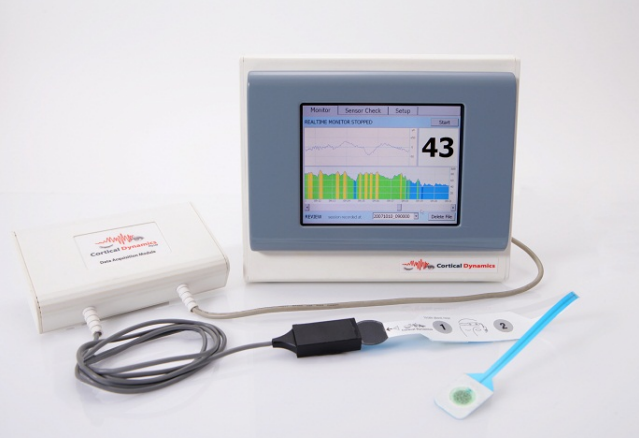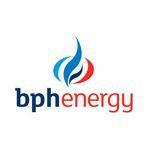BPH completes successful anaesthesia monitor trials
Hey! Looks like you have stumbled on the section of our website where we have archived articles from our old business model.
In 2019 the original founding team returned to run Next Investors, we changed our business model to only write about stocks we carefully research and are invested in for the long term.
The below articles were written under our previous business model. We have kept these articles online here for your reference.
Our new mission is to build a high performing ASX micro cap investment portfolio and share our research, analysis and investment strategy with our readers.
Click Here to View Latest Articles
BPH Energy (ASX:BPH) today provided details on further successful trials of the Cortical Brain Anaesthesia Response (BAR) Monitor at St. Luke’s Private Hospital and Strathfield Private Hospital in Sydney.
The BAR Monitor (or BARM) uses processed electroencephalography (pEEG) to monitor the brain response to anaesthetic and sedative agents. It’s the only monitor to use EEG analysis based on a model of brain electrical activity.
Benefits to patients include reduced risk of waking up or having recollections of surgical procedures or dreams during the surgical procedure; reduced risk of receiving too high a dose of anaesthetic agent, which can lead to post-operative nausea and discomfort, or permanent injury or death in the most severe cases; and significantly improved outcomes, particularly for patients at high risk of awareness.
The monitor's benefits to anaesthetists include the fact that it facilitates the use of the optimal dose of anaesthetic agent and the delivery of higher quality and more reliable service to hospitals and patients. It also reduces the risk of litigation due to patients experiencing awareness during surgery.
The advantages also extend to hospitals and day clinics, with the improved likelihood of delivering a better service to patients. Optimising the dose of anaesthetic agent used can reduce the use of anaesthetic agents, improve patient turn-around times, and lead to cost savings. Again, there's also the reduced risk of litigation.
The BAR Monitor has now been used with 109 patients at Strathfield and St Luke’s Hospitals and has been found to meet the three main hospital purchase requirements — providing technology benefits, clinical benefits, and cost-effectiveness.
The trials have been conducted by Dr Adrian Sultana MD FRCP (Glasg) FANZCA, a consultant anaesthetist. He is appointed as a Conjoint Lecturer at the Prince of Wales Clinical School, University of New South Wales and is also a Clinical Lecturer in Anaesthesia at the Australian School of Advanced Medicine, Macquarie University. Sultana is also a director of the International Society for the Perioperative Care of the Obese Patient.

The trials demonstrated that use of the BAR Monitor leads to a significant reduction in anaesthesia recovery time using TIVA (total intravenous anaesthesia).
The Cortical BARM was remarkably stable and the responsive signal permitted a new level of belief in the awareness monitoring technique, allowing Dr Sultana to run cases at a CCS index of 45 with confidence in early tapering of the patients' anaesthesia using TCI (infusions of propofol and remifentanil).
The BARM had impressive stability and speed of response. The anaesthetist was able to administer significantly less TIVA and was able to have the patient wake within three minutes of the end of the operation. Often, when using the BIS/Entropy (monitors), they dramatically lag patients' emergence, and Dr Sultana has had patients that take up to 20 minutes to wake up. Notably, he reported the patients emerged at CCS index of 70.
In usage with NMB (Neuromuscular Block), he was able to “achieve accuracy, predictability and a smooth wake up”.
BPH investee, Cortical Dynamics Ltd, believes these conclusions have significant implications for hospital operations. Optimising the dose of anaesthetic agent used can reduce the use of anaesthetic agents, improve patient turn-around times and lead to cost savings. It can facilitate the delivery of higher quality and more reliable service to hospitals and patients.
General Information Only
This material has been prepared by StocksDigital. StocksDigital is an authorised representative (CAR 000433913) of 62 Consulting Pty Limited (ABN 88 664 809 303) (AFSL 548573).
This material is general advice only and is not an offer for the purchase or sale of any financial product or service. The material is not intended to provide you with personal financial or tax advice and does not take into account your personal objectives, financial situation or needs. Although we believe that the material is correct, no warranty of accuracy, reliability or completeness is given, except for liability under statute which cannot be excluded. Please note that past performance may not be indicative of future performance and that no guarantee of performance, the return of capital or a particular rate of return is given by 62C, StocksDigital, any of their related body corporates or any other person. To the maximum extent possible, 62C, StocksDigital, their related body corporates or any other person do not accept any liability for any statement in this material.
Conflicts of Interest Notice
S3 and its associated entities may hold investments in companies featured in its articles, including through being paid in the securities of the companies we provide commentary on. We disclose the securities held in relation to a particular company that we provide commentary on. Refer to our Disclosure Policy for information on our self-imposed trading blackouts, hold conditions and de-risking (sell conditions) which seek to mitigate against any potential conflicts of interest.
Publication Notice and Disclaimer
The information contained in this article is current as at the publication date. At the time of publishing, the information contained in this article is based on sources which are available in the public domain that we consider to be reliable, and our own analysis of those sources. The views of the author may not reflect the views of the AFSL holder. Any decision by you to purchase securities in the companies featured in this article should be done so after you have sought your own independent professional advice regarding this information and made your own inquiries as to the validity of any information in this article.
Any forward-looking statements contained in this article are not guarantees or predictions of future performance, and involve known and unknown risks, uncertainties and other factors, many of which are beyond our control, and which may cause actual results or performance of companies featured to differ materially from those expressed in the statements contained in this article. S3 cannot and does not give any assurance that the results or performance expressed or implied by any forward-looking statements contained in this article will actually occur and readers are cautioned not to put undue reliance on forward-looking statements.
This article may include references to our past investing performance. Past performance is not a reliable indicator of our future investing performance.

